I recently received a marketing e-mail from Sheffield Phoenix Press, so I might as well take the time now to say a few words about the press. Although it has only been around since 2004, it is the successor to the former Sheffield Academic Press of the University of Sheffield 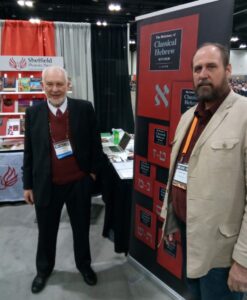 in England. It is now an independent academic press focused on biblical studies. It was founded and is still directed by David J. A. Clines, the greatest living Hebrew scholar. Clines is the editor, and Sheffield Phoenix Press is the publisher, of the 9-volume Dictionary of Classical Hebrew (1993-2016), which is slowly being replaced by the Dictionary of Classical Hebrew Revised,
in England. It is now an independent academic press focused on biblical studies. It was founded and is still directed by David J. A. Clines, the greatest living Hebrew scholar. Clines is the editor, and Sheffield Phoenix Press is the publisher, of the 9-volume Dictionary of Classical Hebrew (1993-2016), which is slowly being replaced by the Dictionary of Classical Hebrew Revised, 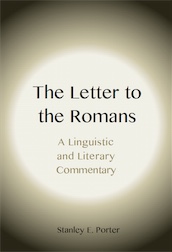 of which two volumes have been released. I only have one book in my library published by Sheffield Phoenix Press: a commentary on Romans titled The Letter to the Romans: A Linguistic and Literary Commentary (2015), by one of my favorite authors and biblical scholars, Stanley E. Porter. Although there are a few books published by Sheffield Phoenix Press that I would not mind reading (like Articular Infinitives in the Greek of the New Testament: On the Exegetical Benefit of Grammatical Precision [2006], by Denny Burk), there are no other books by this publisher that would be of interest to most readers of The Preacher’s Library.
of which two volumes have been released. I only have one book in my library published by Sheffield Phoenix Press: a commentary on Romans titled The Letter to the Romans: A Linguistic and Literary Commentary (2015), by one of my favorite authors and biblical scholars, Stanley E. Porter. Although there are a few books published by Sheffield Phoenix Press that I would not mind reading (like Articular Infinitives in the Greek of the New Testament: On the Exegetical Benefit of Grammatical Precision [2006], by Denny Burk), there are no other books by this publisher that would be of interest to most readers of The Preacher’s Library.
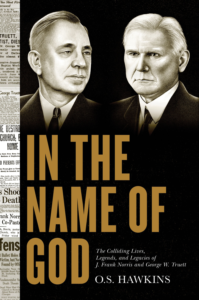 J. Frank Norris (1877-1952) pastored the First Baptist Church of Ft. Worth while George W. Truett (1867-1944) pastored the First Baptist Church of Dallas. Norris left the SBC while Truett remained in. Broadman & Holman (B & H) Academic is announcing the publication on September 1 of In the Name of God: The Colliding Lives, Legends, and Legacies of J. Frank Norris and George W. Truett, by O. S. Hawkins. I will have more to say about this publisher at a later date. This looks to be a fascinating book if you are interested in Baptist history. You can preview the book here.
J. Frank Norris (1877-1952) pastored the First Baptist Church of Ft. Worth while George W. Truett (1867-1944) pastored the First Baptist Church of Dallas. Norris left the SBC while Truett remained in. Broadman & Holman (B & H) Academic is announcing the publication on September 1 of In the Name of God: The Colliding Lives, Legends, and Legacies of J. Frank Norris and George W. Truett, by O. S. Hawkins. I will have more to say about this publisher at a later date. This looks to be a fascinating book if you are interested in Baptist history. You can preview the book here.
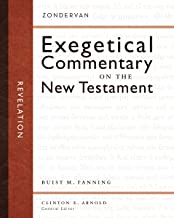 The newest commentary on Revelation, and one that is actually worth having, is the volume on Revelation by Buist Fanning, senior professor emeritus of New Testament studies at Dallas Theological Seminary, in the Zondervan Exegetical Commentary on the New Testament series. I reviewed the book earlier this year for the Journal of Dispensational Theology (Spring 2021, pp. 101-106). I need to point out two typos in the review. The first, which is my fault (although the copy editor should have seen it), is “off-outting” for “off-putting” on the last page. The second, which was introduced by the copy editor, is “recommend” for “recommended,” also on the last page. The biblical books in this series that have not been released yet are 2 Corinthians, Philippians, Pastoral Epistles, Hebrews, 1 & 2 Peter, and Jude. I previously reviewed for the same journal (Winter, 2015, pp. 300-303) the volume on 1 and 2 Thessalonians by Gary Shogren. Although I said in my review that the book was “important to anyone focusing in some way on 1 & 2 Thessalonians,” the book does fall short because the author is not a premillennialist. I have not looked at any of the volumes in the companion series on the Old Testament.
The newest commentary on Revelation, and one that is actually worth having, is the volume on Revelation by Buist Fanning, senior professor emeritus of New Testament studies at Dallas Theological Seminary, in the Zondervan Exegetical Commentary on the New Testament series. I reviewed the book earlier this year for the Journal of Dispensational Theology (Spring 2021, pp. 101-106). I need to point out two typos in the review. The first, which is my fault (although the copy editor should have seen it), is “off-outting” for “off-putting” on the last page. The second, which was introduced by the copy editor, is “recommend” for “recommended,” also on the last page. The biblical books in this series that have not been released yet are 2 Corinthians, Philippians, Pastoral Epistles, Hebrews, 1 & 2 Peter, and Jude. I previously reviewed for the same journal (Winter, 2015, pp. 300-303) the volume on 1 and 2 Thessalonians by Gary Shogren. Although I said in my review that the book was “important to anyone focusing in some way on 1 & 2 Thessalonians,” the book does fall short because the author is not a premillennialist. I have not looked at any of the volumes in the companion series on the Old Testament.
The earliest attempt to provide some biographical information about the King James translators was undertaken about 1650. I have a copy of the five-page manuscript, and talk about it during my King James Bible Conference presentations. Many of the older large histories of the English Bible give some information about the translators. The oldest book on the King James Bible that gives information about the translators is Vindication of Our Authorized Translation and Translators of the Bible; and of Preceding English Versions Authoritatively Commended to the Notice of Those Translators (F. C. & J. Rivington, 1819), by Henry John Todd. Chapter 7 is about the King James translators. The book is mainly a defense of the King James Bible “occasioned by certain objections made by Mr. John Bellany in his late translation of the book of Genesis, and by Sir James Bland Burges, in his reasons in favour of a new translation of the Holy Scriptures.” Todd supplemented this work with An Authentic Account of Our Authorized Translation of the Holy Bible, and of the Translators: with Testimonies to the Excellence of the Translation (J. G. and F. Rivington, 1834). It is termed on the title page the second edition. Todd says in his preface that it has been fifteen years since he wrote his first work, and that he has “now also made some additions to that account of the present translation.” The book is really an entirely new work. Chapter 2 is about the King James translators. I have reprinted both of Todd’s books in my Classic Reprints series. A third edition of the latter was issued in 1838. Although the book has been re-typeset, and contains two additional pages (70 verses 68), there is no difference between the second and third editions. I have seen another re-typeset but identical edition of 64 pages published in 1842 by the Society for Promoting Christian Knowledge with no edition number. This leads me to believe that there have perhaps been other editions issued by other publishers over the years.
Next there is The Translators Revived; A Biographical Memoir of the Authors of the Holy Bible (Charles Scribner, 1853), by Alexander W. McClure. Although the bulk of this book is about the King James translators, there is also information about the translators of the earlier English Bibles. I have an undated exact reprint by Maranatha Publications (Penn.) with a one-page foreword, but have seen the original. I also have an undated exact reprint by Maranatha Bible Society (Mich.) with a foreword and a brief history of our English Bible by R. E. Rhoades, and the addition of a bibliography. It claims to be taken from the 1858 edition, but this is probably a mistake, since I know of no other edition but the first of 1853.
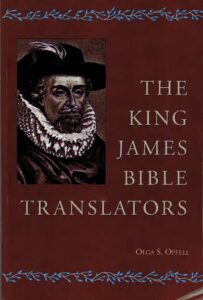 The best book on the King James translators—and one that is only about the translators—is The King James Bible Translators (McFarland & Company, Inc., Publishers, 1982), by Olga S. Opfell. I own a signed copy of the undated paperback edition that was issued sometime after the year 2000 (the image on the cover has a copyright of 2001). Although she died in 2008, I did not know about her death until I received a letter from her husband in 2013. McFarland still sells two of her other books that it published (Queens, Empresses, Grand Duchesses and Regents, 1989; Royalty Who Wait, 2001), but The King James Bible Translators is out of print. I should note here that McFarland is the publisher of English Language Bible Translators (2003), by
The best book on the King James translators—and one that is only about the translators—is The King James Bible Translators (McFarland & Company, Inc., Publishers, 1982), by Olga S. Opfell. I own a signed copy of the undated paperback edition that was issued sometime after the year 2000 (the image on the cover has a copyright of 2001). Although she died in 2008, I did not know about her death until I received a letter from her husband in 2013. McFarland still sells two of her other books that it published (Queens, Empresses, Grand Duchesses and Regents, 1989; Royalty Who Wait, 2001), but The King James Bible Translators is out of print. I should note here that McFarland is the publisher of English Language Bible Translators (2003), by 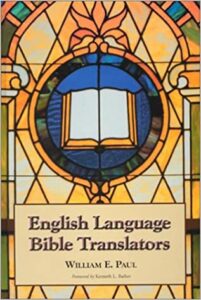 someone I know from the International Society of Bible Collectors named William E. Paul. Here is the publisher’s description: “It provides information about the men and women who produced English language translations. Arranged alphabetically by surname, each of the 346 entries includes biographical and vocational information; notes on the various editions produced; samples of their translation; and other pertinent facts. In cases where translations were done by committee, the chairpersons and project initiators are covered. Important anonymous translations are also included.”
someone I know from the International Society of Bible Collectors named William E. Paul. Here is the publisher’s description: “It provides information about the men and women who produced English language translations. Arranged alphabetically by surname, each of the 346 entries includes biographical and vocational information; notes on the various editions produced; samples of their translation; and other pertinent facts. In cases where translations were done by committee, the chairpersons and project initiators are covered. Important anonymous translations are also included.”
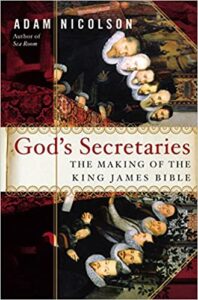 The most recent book about the King James Translators, but not exclusively, is God’s Secretaries: The Making of the King James Bible (HarperCollins, 2003), by Adam Nicolson. This book was first published by HarperCollins in Great Britain the same year with a different cover design under the title of Power and Glory: Jacobean England and the Making of the King James Bible. A paperback edition of the latter was issued in 2004, and of the former in 2005, but with yet another cover design. The book was reissued in paperback for the quatercentenary of the King James Bible in 2011 under the title of When God Spoke English: The Making of the King James Bible (HarperPress, 2011). God’s Secretaries is readily available and highly recommended.
The most recent book about the King James Translators, but not exclusively, is God’s Secretaries: The Making of the King James Bible (HarperCollins, 2003), by Adam Nicolson. This book was first published by HarperCollins in Great Britain the same year with a different cover design under the title of Power and Glory: Jacobean England and the Making of the King James Bible. A paperback edition of the latter was issued in 2004, and of the former in 2005, but with yet another cover design. The book was reissued in paperback for the quatercentenary of the King James Bible in 2011 under the title of When God Spoke English: The Making of the King James Bible (HarperPress, 2011). God’s Secretaries is readily available and highly recommended.
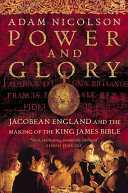
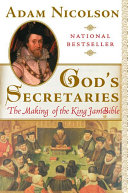
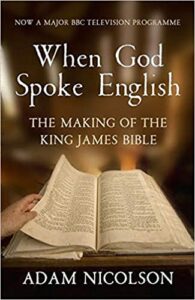
Another place to find out biographical information about the King James translators is the old Oxford Dictionary of National Biography. It is online for free here. The new edition cannot be accessed for free.
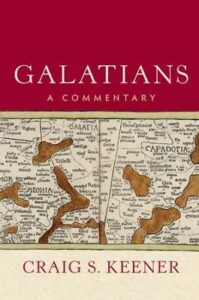 Regarding my 200+ commentaries on Galatians, I have a few times been asked which ones are the best. This is a tough question. I suppose that if someone put a gun to my head and said that I could keep five of my commentaries on Galatians but had to throw the
Regarding my 200+ commentaries on Galatians, I have a few times been asked which ones are the best. This is a tough question. I suppose that if someone put a gun to my head and said that I could keep five of my commentaries on Galatians but had to throw the rest of them away, then these (not in any order) are the five that I would keep. I would definitely include the newest Galatians commentary that I own, Galatians: A Commentary (Baker Academic, 2019), by Craig S. Keener, one of my favorite commentators and authors. Keener references my work on Galatians in a brief footnote on page 66, which also means that I made the bibliography and index. I would also keep the following by two of my favorite commentators: Grace in Galatia: A Commentary on St Paul’s Letter to the Galatians (Eerdmans, 1998), by Ben Witherington III; and Galatians in the Baker Exegetical Commentary on the New Testament series (Baker Academic, 2013), by Douglas J. Moo. The fourth one would have to be Galatians in the Word Biblical Commentary series (Word Books, 1990), by Richard N. Longenecker. This incomplete series
rest of them away, then these (not in any order) are the five that I would keep. I would definitely include the newest Galatians commentary that I own, Galatians: A Commentary (Baker Academic, 2019), by Craig S. Keener, one of my favorite commentators and authors. Keener references my work on Galatians in a brief footnote on page 66, which also means that I made the bibliography and index. I would also keep the following by two of my favorite commentators: Grace in Galatia: A Commentary on St Paul’s Letter to the Galatians (Eerdmans, 1998), by Ben Witherington III; and Galatians in the Baker Exegetical Commentary on the New Testament series (Baker Academic, 2013), by Douglas J. Moo. The fourth one would have to be Galatians in the Word Biblical Commentary series (Word Books, 1990), by Richard N. Longenecker. This incomplete series 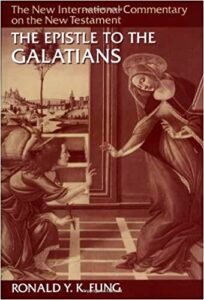 is now published by Zondervan, which is working on completing the series. Last, but certainly not least, is The Epistle to the Galatians in the New International Commentary on the New Testament series (Eerdmans, 1988), by Ronald Y. K. Fung. This is the replacement volume for the original NICNT volume on Galatians in 1953 by Herman N. Ridderbos that was translated from the Dutch. Fung’s work has itself been replaced by that of David A. deSilva, The Letter to the Galatians (Eerdmans, 2018). This is a much larger and more up-to-date volume, but I have not had a chance to look through it yet. It may turn out that it belongs in my top five list.
is now published by Zondervan, which is working on completing the series. Last, but certainly not least, is The Epistle to the Galatians in the New International Commentary on the New Testament series (Eerdmans, 1988), by Ronald Y. K. Fung. This is the replacement volume for the original NICNT volume on Galatians in 1953 by Herman N. Ridderbos that was translated from the Dutch. Fung’s work has itself been replaced by that of David A. deSilva, The Letter to the Galatians (Eerdmans, 2018). This is a much larger and more up-to-date volume, but I have not had a chance to look through it yet. It may turn out that it belongs in my top five list.
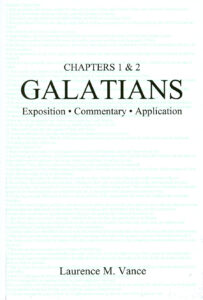 I mentioned in the previous post my commentary on Galatians chapters 1 and 2 and that I owned over 200 commentaries on Galatians. I also mentioned J. B. Lightfoot (1828-1889), the former Bishop of Durham. Why 200+ commentaries? My writing philosophy is that of Lightfoot: “Before you write a book on something you must first read everything on the subject.” This I did, and not just commentaries, but scores of articles and books about Galatians that were not commentaries. Galatians 1 & 2: Exposition, Commentary, Application was written during the years 2000-2001, but not published until 2010. After a preface and introduction, Galatians chapter 1 is covered on pages 1-57 and Galatians chapter 2 on pages 58-134. The bibliography appears on pages 135-154. The book contains no fluff, and no regurgitation from other commentaries, or else it would have been much longer—and perhaps sold better. This book has never been a good seller. You ought to write a commentary, I was told in the 1990s. So I did, and then few were interested in it. The main drawback, of course, is that the commentary only covers Galatians chapters 1 and 2. The book does contain a lot of meat on Galatians chapters 1 and 2, and I explain in the introduction how that it is not all that unusual to just write something on the first two chapters of Galatians, but evidently that is not enough to overcome the fact that the commentary only covers the first two chapters. Galatians 1 & 2: Exposition, Commentary, Application has been marked down to $5.95 for a good many years. I have always sent my books out for free to retail customers. But because postage has gone up so much, it will cost me half of the book’s price just to mail you one copy. I would prefer that you just order something else and I will include the Galatians book in your order for free. Just mention this post.
I mentioned in the previous post my commentary on Galatians chapters 1 and 2 and that I owned over 200 commentaries on Galatians. I also mentioned J. B. Lightfoot (1828-1889), the former Bishop of Durham. Why 200+ commentaries? My writing philosophy is that of Lightfoot: “Before you write a book on something you must first read everything on the subject.” This I did, and not just commentaries, but scores of articles and books about Galatians that were not commentaries. Galatians 1 & 2: Exposition, Commentary, Application was written during the years 2000-2001, but not published until 2010. After a preface and introduction, Galatians chapter 1 is covered on pages 1-57 and Galatians chapter 2 on pages 58-134. The bibliography appears on pages 135-154. The book contains no fluff, and no regurgitation from other commentaries, or else it would have been much longer—and perhaps sold better. This book has never been a good seller. You ought to write a commentary, I was told in the 1990s. So I did, and then few were interested in it. The main drawback, of course, is that the commentary only covers Galatians chapters 1 and 2. The book does contain a lot of meat on Galatians chapters 1 and 2, and I explain in the introduction how that it is not all that unusual to just write something on the first two chapters of Galatians, but evidently that is not enough to overcome the fact that the commentary only covers the first two chapters. Galatians 1 & 2: Exposition, Commentary, Application has been marked down to $5.95 for a good many years. I have always sent my books out for free to retail customers. But because postage has gone up so much, it will cost me half of the book’s price just to mail you one copy. I would prefer that you just order something else and I will include the Galatians book in your order for free. Just mention this post.
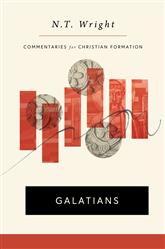 William B. Eerdmans Publishing recently announced the release of N. T. Wright’s commentary on Galatians, the inaugural volume in the Commentary for Christian Formation series. Although this is of great interest to me because I have written a commentary on Galatians chapters 1 and 2 and own over 200 commentaries on Galatians, the book will probably not be of much interest to most preachers. Wright is the former bishop of Durham, a post once held by J.B. Lightfoot and Brooke Foss Westcott. He is an extremely prolific writer, but has not written much of any value to most readers of The Preacher’s Library. I have met Wright at least twice over the years. He is a dynamic speaker and one of the greatest Anglican scholars in history. However, he has a very muddled
William B. Eerdmans Publishing recently announced the release of N. T. Wright’s commentary on Galatians, the inaugural volume in the Commentary for Christian Formation series. Although this is of great interest to me because I have written a commentary on Galatians chapters 1 and 2 and own over 200 commentaries on Galatians, the book will probably not be of much interest to most preachers. Wright is the former bishop of Durham, a post once held by J.B. Lightfoot and Brooke Foss Westcott. He is an extremely prolific writer, but has not written much of any value to most readers of The Preacher’s Library. I have met Wright at least twice over the years. He is a dynamic speaker and one of the greatest Anglican scholars in history. However, he has a very muddled 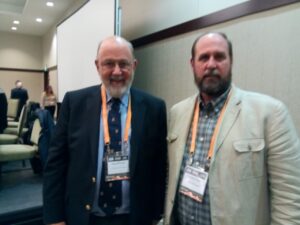 theology. A theologically conservative reviewer I respect reviewed (Journal of Dispensational Theology, Winter 2016, pp. 338-341) Wright’s book Surprised by Hope: Rethinking Heaven, the Resurrection, and the Mission of the Church (Harper Collins, 2008) and concluded that “by the close of Surprised by Hope, N. T, Wright has redefined heaven, hell, the gospel, future judgment, and the entire mission of the church.”
theology. A theologically conservative reviewer I respect reviewed (Journal of Dispensational Theology, Winter 2016, pp. 338-341) Wright’s book Surprised by Hope: Rethinking Heaven, the Resurrection, and the Mission of the Church (Harper Collins, 2008) and concluded that “by the close of Surprised by Hope, N. T, Wright has redefined heaven, hell, the gospel, future judgment, and the entire mission of the church.”
I received an e-mail recently from Notre Dame University Press informing me of a summer 40 percent off sale. Unlike some of the other e-mails I have received from publishers this month, there was no mention of Pride Month. However, one of the forthcoming books being promoted is Gay, Catholic, and American: My Legal Battle for Marriage Equality and Inclusion, by Greg Bourke, scheduled for release in September. Because Notre Dame is a Catholic university, it is to be expected that its press publishes books like Queen of Heaven: The Assumption and Coronation of the Virgin in Early Modern English Writing (2018), by Lilla Grindlay; and Mary’s Bodily Assumption (2014), by Matthew Levering. I reviewed another book of Levering, one that he wrote with evangelical Kevin J. Vanhoozer, Was the Reformation a Mistake? Why Catholic Doctrine Is Not Unbiblical (Zondervan, 2017), in the Spring 2018 issue of the Journal of the Grace Evangelical Society (pp. 103-106). But Notre Dame University Press also publishes hundreds of books that can broadly be considered religious that are not about Catholicism. The problem, however, is that the vast majority of them aren’t worth reading either.
 The only two books on my shelves published by Notre Dame University Press that I know I still have are The Sword of the Lord: Military Chaplains from the First to the Twenty-First Century (2004), edited by Doris L. Bergen; and St. Jerome’s Commentaries on Galatians, Titus, and Philemon (2010), translated by Thomas P. Scheck, Associate
The only two books on my shelves published by Notre Dame University Press that I know I still have are The Sword of the Lord: Military Chaplains from the First to the Twenty-First Century (2004), edited by Doris L. Bergen; and St. Jerome’s Commentaries on Galatians, Titus, and Philemon (2010), translated by Thomas P. Scheck, Associate 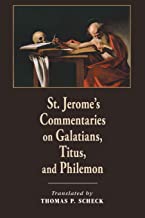 Professor of Theology at Ave Maria University in Florida, and a brilliant scholar. I also have Erasmus’s Life of Origen: A New Annotated Translation of the Prefaces to Erasmus of Rotterdam’s Edition of Origen’s Writings (1536), translated with commentary by Scheck (The Catholic University of America Press, 2016); and Origen’s Commentary on the Epistle to the Romans, translated by Scheck (The Catholic University of America Press, 2009, 2012). Notre Dame University Press also publishes Scheck’s Origen and the History of Justification: The Legacy of Origen’s Commentary on Romans (2016), but I haven’t gotten a copy yet. I did purchase and read Creation ex nihilo: Origins, Development, Contemporary Challenges (2017), edited by Gary A. Anderson and Markus Bockmuehl, soon after it was published, but it was a huge disappointment, so I got rid of it. Notre Dame University Press publishes The Study of the Bible in the Middle Ages (1989), by Beryl Smalley (1905-1984), but the copy I have is the 1952 second edition published by Basil Blackwell.
Professor of Theology at Ave Maria University in Florida, and a brilliant scholar. I also have Erasmus’s Life of Origen: A New Annotated Translation of the Prefaces to Erasmus of Rotterdam’s Edition of Origen’s Writings (1536), translated with commentary by Scheck (The Catholic University of America Press, 2016); and Origen’s Commentary on the Epistle to the Romans, translated by Scheck (The Catholic University of America Press, 2009, 2012). Notre Dame University Press also publishes Scheck’s Origen and the History of Justification: The Legacy of Origen’s Commentary on Romans (2016), but I haven’t gotten a copy yet. I did purchase and read Creation ex nihilo: Origins, Development, Contemporary Challenges (2017), edited by Gary A. Anderson and Markus Bockmuehl, soon after it was published, but it was a huge disappointment, so I got rid of it. Notre Dame University Press publishes The Study of the Bible in the Middle Ages (1989), by Beryl Smalley (1905-1984), but the copy I have is the 1952 second edition published by Basil Blackwell.
There are only two other religious books published by Notre Dame University Press that might be worth reading. First there is American Evangelicalism: George Marsden and the State of American Religious History (2014), edited by Darren Dochuk, Thomas S. Kidd, and Kurt W. Peterson. Marsden is the respected historian of American church history. I have his Reforming Fundamentalism: Fuller Seminary and the New Evangelicalism (Eerdmans, 1987), with an important new preface by the author; and his Understanding Fundamentalism and Evangelicalism (Eerdmans, 1991). I thought for sure I had his Fundamentalism and American Culture (2nd ed., Oxford, 2006), but can’t seem to find it. The second book is Hell: The Logic of Damnation (1992), by Jerry L. Walls, a Protestant scholar. I have his Heaven, Hell, and Purgatory: Rethinking the Things That Matter Most (Brazos Press, 2015), and his Purgatory: The Logic of Total Transformation (Oxford, 2012), but not his Heaven: The Logic of Eternal Joy (Oxford, 2002).
Regarding the non-religious titles published by Notre Dame University Press, I note that several volumes by Solzhenitsyn are available. If you don’t know who he is, then you should, and I suggest that you look him up. Statehood and Union: A History of the Northwest Ordinance (2019), by Peter S. Onuf, looks important to the study of American history, but is not high on my reading list. I was pleasantly surprised to see that Notre Dame publishes Twilight of the American Century (2018), by Andrew J. Bacevich. 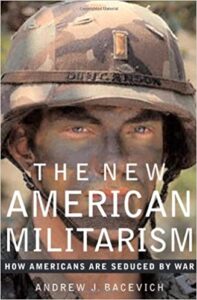 Beginning with his The New American Militarism: How Americans Are Seduced by War (Oxford, 2005), which I think was his second book, and is one of his best, I have read almost everything he has written, and highly recommend all of his books. Rubbish or worthless is all I can say about the vast majority of the other non-religious books published by Notre Dame University Press.
Beginning with his The New American Militarism: How Americans Are Seduced by War (Oxford, 2005), which I think was his second book, and is one of his best, I have read almost everything he has written, and highly recommend all of his books. Rubbish or worthless is all I can say about the vast majority of the other non-religious books published by Notre Dame University Press.
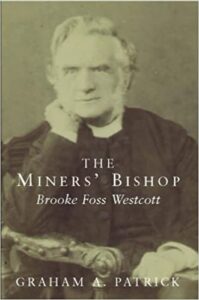 Brooke Foss Westcott (1825-1901) and Fenton John Anthony Hort (1828-1892), as I am sure most readers of The Preacher’s Library know, are the editors of a critical edition of the Greek New Testament (1881) that is the basis of the NA/UBS Greek text today and two of the translators of the New Testament (1881) of the Revised Version (1885). Together with Joseph Barber Lightfoot (1828-1889), they formed what was known as the Cambridge Triumvirate. Lightfoot was the most orthodox, Hort the least. Since most of what has been written about Westcott and Hort for the past 50 years has focused on the negative, I want to mention two books in my library
Brooke Foss Westcott (1825-1901) and Fenton John Anthony Hort (1828-1892), as I am sure most readers of The Preacher’s Library know, are the editors of a critical edition of the Greek New Testament (1881) that is the basis of the NA/UBS Greek text today and two of the translators of the New Testament (1881) of the Revised Version (1885). Together with Joseph Barber Lightfoot (1828-1889), they formed what was known as the Cambridge Triumvirate. Lightfoot was the most orthodox, Hort the least. Since most of what has been written about Westcott and Hort for the past 50 years has focused on the negative, I want to mention two books in my library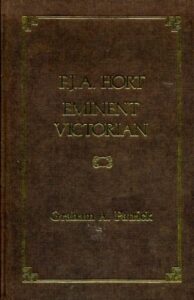 about their life and work, written by British Methodist minister Graham A. Patrick, that are written from a neutral perspective: The Miner’s Bishop: Brooke Foss Westcott (OSL Publications, 2002; 2nd ed., Epworth Press, 2004) and F. J. A. Hort: Eminent Victorian (Almond Press, 1988). The first book is 282 pages, and focuses more on Westcott’s work. I must say that I had no idea that Westcott had fathered ten children, seven sons and three daughters. The work on Hort is more of a biography, but is only a brief 127 pages. While I don’t discount much of the negative press they have received, it is interesting to read a perspective not fueled by an agenda.
about their life and work, written by British Methodist minister Graham A. Patrick, that are written from a neutral perspective: The Miner’s Bishop: Brooke Foss Westcott (OSL Publications, 2002; 2nd ed., Epworth Press, 2004) and F. J. A. Hort: Eminent Victorian (Almond Press, 1988). The first book is 282 pages, and focuses more on Westcott’s work. I must say that I had no idea that Westcott had fathered ten children, seven sons and three daughters. The work on Hort is more of a biography, but is only a brief 127 pages. While I don’t discount much of the negative press they have received, it is interesting to read a perspective not fueled by an agenda.
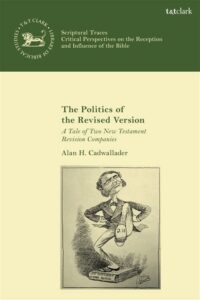 The first widely distributed and accepted modern version of the Bible was the Revised Version. The New Testament was issued first, in 1881, followed by the Old Testament with the New in 1885. Beginning with the publication of the New Testament, and continuing for several years, various books were issued in defense of the new Bible. Some of these touched on the history of the Revised Version, like Lectures on Bible Revision (Hodder & Stoughton, 1881), by Samuel Newth (1821-1898), one of the translators. If you are interested in a very scholarly, extremely detailed history of the translation of the Revised Version (written without an agenda), based in part on newly available material from the Westcott family archives, then The Politics of the Revised Version: A Tale of Two New Testament Revision Companies (T & T Clark, 2019) is your book. You can view the table of contents and the publisher’s description on the back cover here. I found the book fascinating. Although it contains much info on the role of Westcott and Hort, it also discusses the views and actions of many of the other translators.
The first widely distributed and accepted modern version of the Bible was the Revised Version. The New Testament was issued first, in 1881, followed by the Old Testament with the New in 1885. Beginning with the publication of the New Testament, and continuing for several years, various books were issued in defense of the new Bible. Some of these touched on the history of the Revised Version, like Lectures on Bible Revision (Hodder & Stoughton, 1881), by Samuel Newth (1821-1898), one of the translators. If you are interested in a very scholarly, extremely detailed history of the translation of the Revised Version (written without an agenda), based in part on newly available material from the Westcott family archives, then The Politics of the Revised Version: A Tale of Two New Testament Revision Companies (T & T Clark, 2019) is your book. You can view the table of contents and the publisher’s description on the back cover here. I found the book fascinating. Although it contains much info on the role of Westcott and Hort, it also discusses the views and actions of many of the other translators.